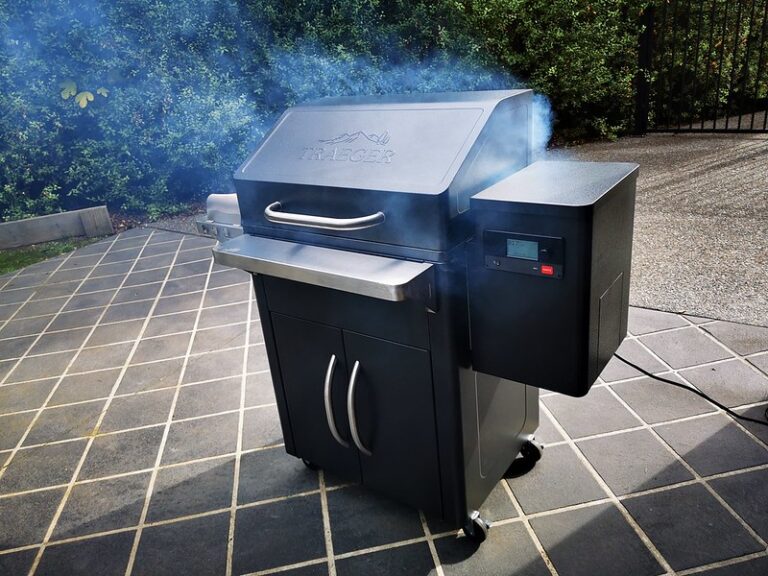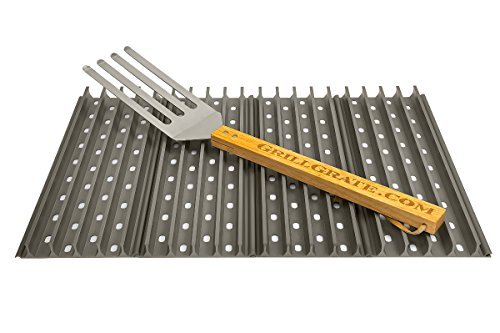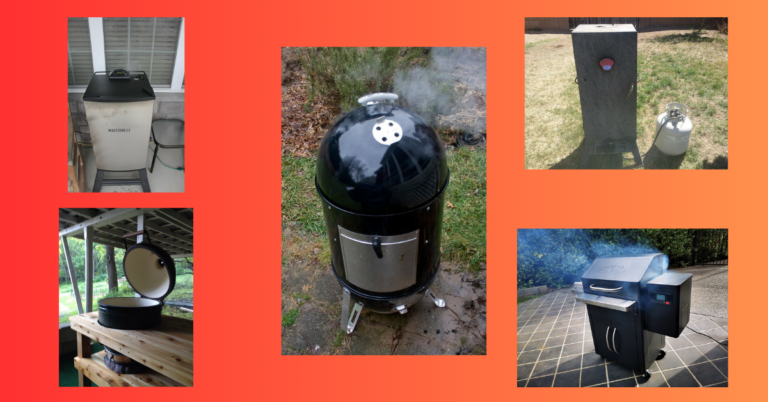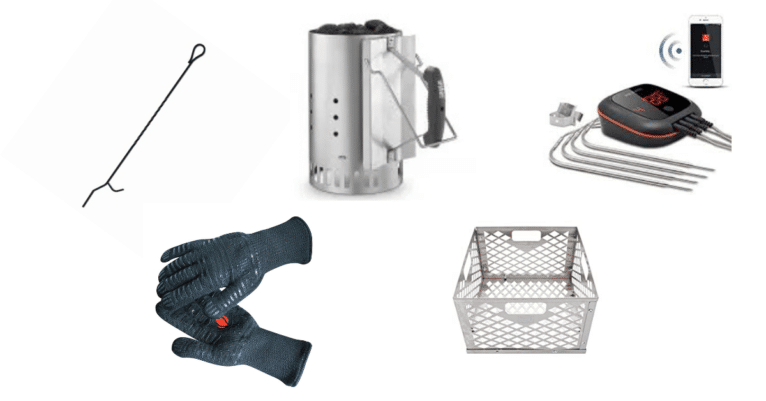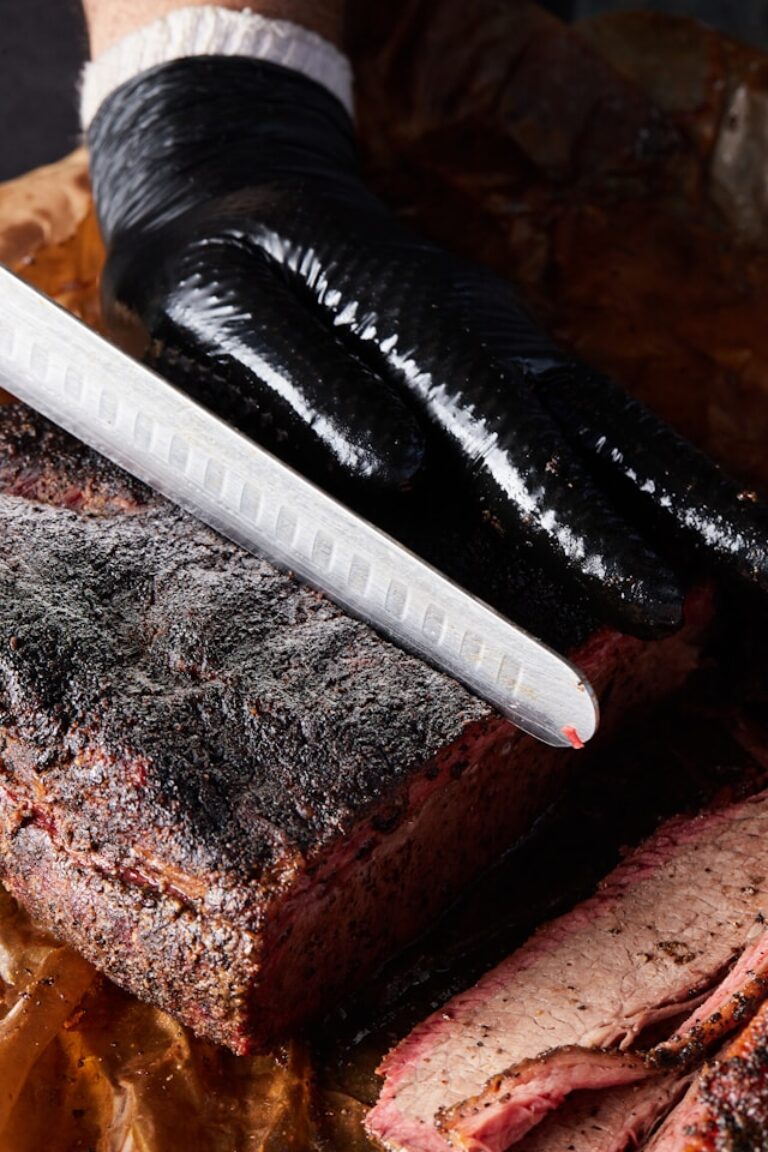Offset vs Pellet Smoker: 12 Effective Game-Changing Insights

Offset vs Pellet Smoker: An Introduction
Choosing between an offset smoker and a pellet smoker can be a tough decision, especially if you’re new to the world of BBQ. Do you want authentic, smoky flavors with traditional wood-burning techniques or the convenience of set-it-and-forget-it smoking? Both smokers have their advantages, but which one suits your cooking style, budget, and experience level? The offset smoker vs pellet smoker debate is a common topic among BBQ enthusiasts, emphasizing that the choice depends on individual preferences and needs.
In this guide, we’ll break down the differences, pros, and cons of each type of smoker, helping you make an informed choice. Whether you’re a seasoned pitmaster or a beginner looking to get started, this comparison will set you on the right path to mastering the art of smoking meat!
What is an Offset Smoker?
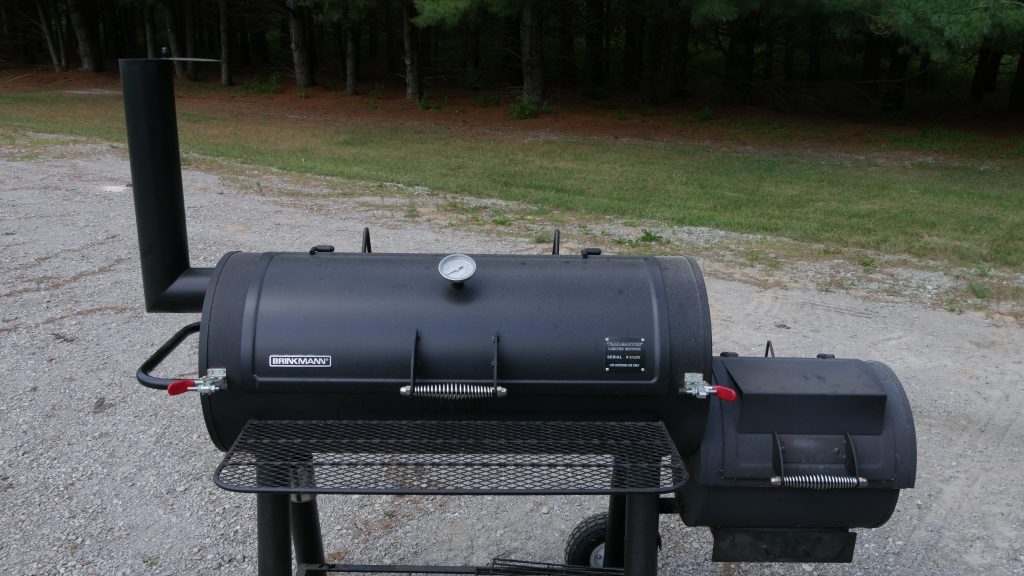
An offset smoker is the classic, old-school BBQ machine that serious pitmasters swear by. It’s built for low and slow cooking, using a separate firebox attached to the side of the main cooking chamber. The heat and smoke travel from the firebox into the cooking area, wrapping your meat in that deep, smoky flavor that gas or electric grills just can’t match. Unlike a pellet smoker, which runs on an automated system, an offset smoker requires constant attention and fire management—but that’s part of the fun (and the challenge). This manual fire management results in a stronger, smokier flavor compared to other types of smokers.
Definition and How It Works
At its core, an offset smoker is a traditional stick burner that relies on real wood and charcoal to produce both heat and smoke. The firebox sits off to the side of the main cooking chamber, which allows indirect heat to slowly cook the meat while smoke continuously flows over it. The design lets you achieve that authentic BBQ flavor with bold, deep smoke penetration that’s tough to replicate with other types of smokers.
Traditional Stick-Burning Method for BBQ
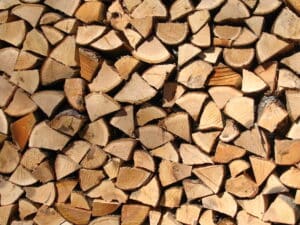
Offset smokers are all about cooking with real wood. Instead of relying on compressed wood pellets or propane, you burn actual wood splits (small logs) to generate heat and smoke. This method produces complex flavors, with different wood types—oak, hickory, apple, cherry—imparting unique characteristics to the meat. The tradeoff? You have to be hands-on, constantly adding wood and adjusting airflow to keep the fire burning at the right temperature. When I first started using my Brinkmann Trailmaster, I learned quickly that burning logs too big would create thick, dirty smoke, while smaller splits (about 3” in diameter and 12” long) gave me clean, blue smoke and better temperature control.
Firebox Placement and Airflow
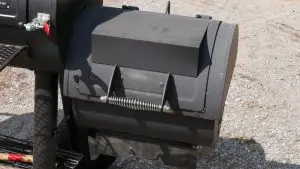
The firebox is the heart of an offset smoker. It’s where you build the fire, and the heat and smoke travel through a vent into the main chamber. Proper airflow control is key—you adjust the firebox vents and chimney damper to control oxygen levels, which directly impacts burn rate and temperature. One mistake I made early on was closing the firebox vents too much, thinking I was locking in heat—but all I did was smother the fire, which led to bitter-tasting BBQ from poor combustion. Once I got the hang of controlling airflow, I was able to maintain steady temperatures and get clean smoke every time.
Why Pitmasters Love Offset Smokers
Despite the effort required, pitmasters love offset smokers because they give complete control over fire, smoke, and flavor. The hands-on process makes BBQ feel like an art—adjusting the fire, choosing different wood combinations, and managing the perfect smoke profile. There’s also something deeply satisfying about tending a fire for hours and seeing a brisket transform into BBQ perfection. My first cook on my offset—baby back ribs—was a night-and-day difference from my gas grill. The smoke ring was deeper, the bark was perfect, and the flavor was exactly what I had been missing.
For those who enjoy the process as much as the result, an offset smoker is the ultimate BBQ tool. If you’re willing to put in the time and effort, it will reward you with some of the best authentic, wood-smoked BBQ you’ll ever make.
What is a Pellet Smoker?
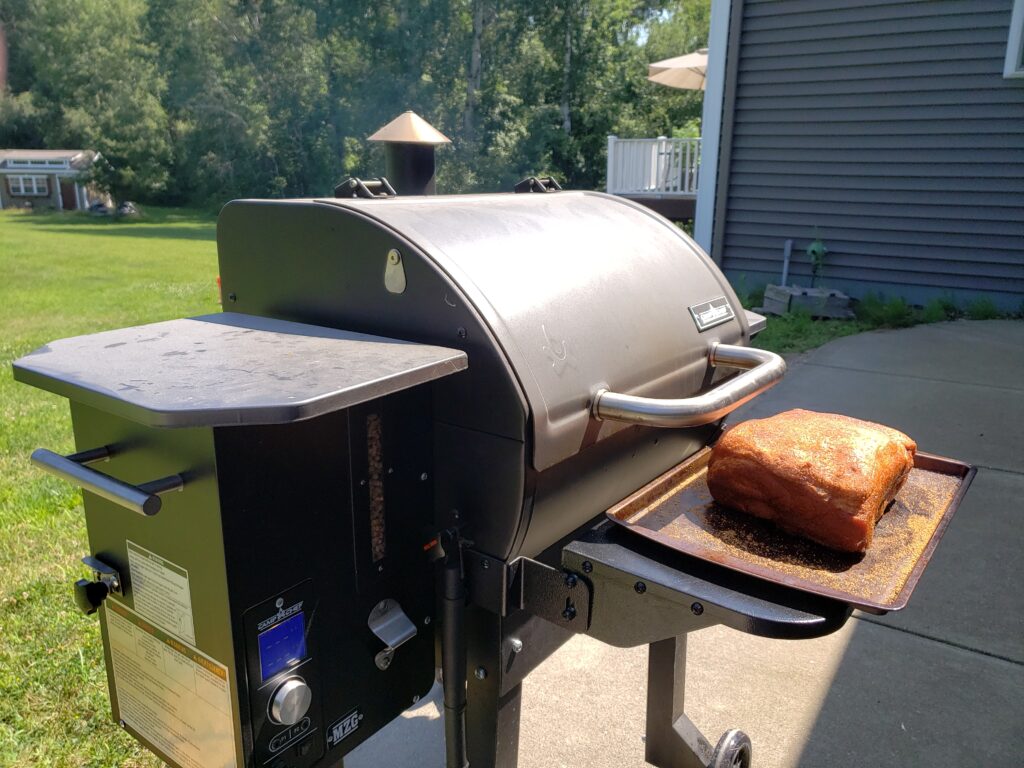
A pellet smoker is the perfect balance between authentic BBQ flavor and modern convenience. Unlike an offset smoker, which requires constant attention, a pellet smoker runs on compressed wood pellets and an automated temperature control system. This automatic temperature regulation enhances convenience and fuel efficiency, allowing you to set the temperature and forget about it while the cooking process unfolds. Pellet smokers are a type of electric smoker, combining the benefits of electric cooking with the desirable flavor from wood.
This makes it easy to achieve consistent results without constantly adjusting airflow or adding wood. But while set-it-and-forget-it smoking is great, there are tradeoffs.
How a Pellet Smoker Operates
A pellet grill works by automatically feeding small, compressed wood pellets into a firepot using an auger system, offering a convenient smoking experience. The smoker’s digital controller manages the temperature by adjusting the rate at which the pellets are fed into the fire. A hot rod igniter starts the combustion, and a small fan regulates airflow to maintain steady heat and clean smoke production. This means no messy charcoal, no babysitting a fire—just load the pellets, set the temp, and let the smoker do the work.
When I bought my Camp Chef Smoke Pro, I immediately appreciated the ease of use. Instead of spending time splitting wood and managing a fire, I just turned a dial and let the digital controller handle everything. My first cook—pork butts for pulled pork—came out perfectly tender, with a nice smoke ring and a flavor that, while milder than an offset, was still delicious.
The Role of Wood Pellets and Electric Components
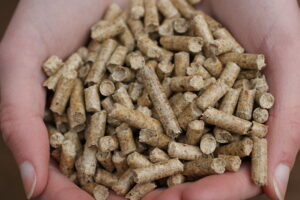
Wood pellets are the fuel source for pellet grills, made from compressed hardwood sawdust. They burn efficiently, producing clean, consistent smoke. Different wood types—like hickory, oak, apple, and cherry—affect the final flavor, giving you the ability to fine-tune your BBQ. The pellet hopper stores these pellets, automatically feeding them into the firepot as needed.
Since a pellet smoker relies on electronic components—like the digital controller, auger, and fans—it does require electricity to function. This means you need a power source, which isn’t always ideal for off-grid cooking. I had to make sure my smoker was near an outlet or use an extension cord when cooking in my backyard. One issue I ran into was the Wi-Fi feature on my pellet smoker never worked properly, which was frustrating. However, since I had a separate temperature monitor, it wasn’t a dealbreaker.
A pellet smoker offers the best of both worlds: real wood smoke with modern convenience. While it doesn’t produce the deep, bold smoke flavor of an offset smoker, it’s perfect for those who want hassle-free smoking with reliable results.
Basic Components of a Smoker
Essential Parts and Their Functions
Understanding the basic components of a smoker is crucial for anyone looking to master the art of BBQ. Each part plays a vital role in the cooking process, and knowing how they work together can help you choose the right smoker and use it effectively.
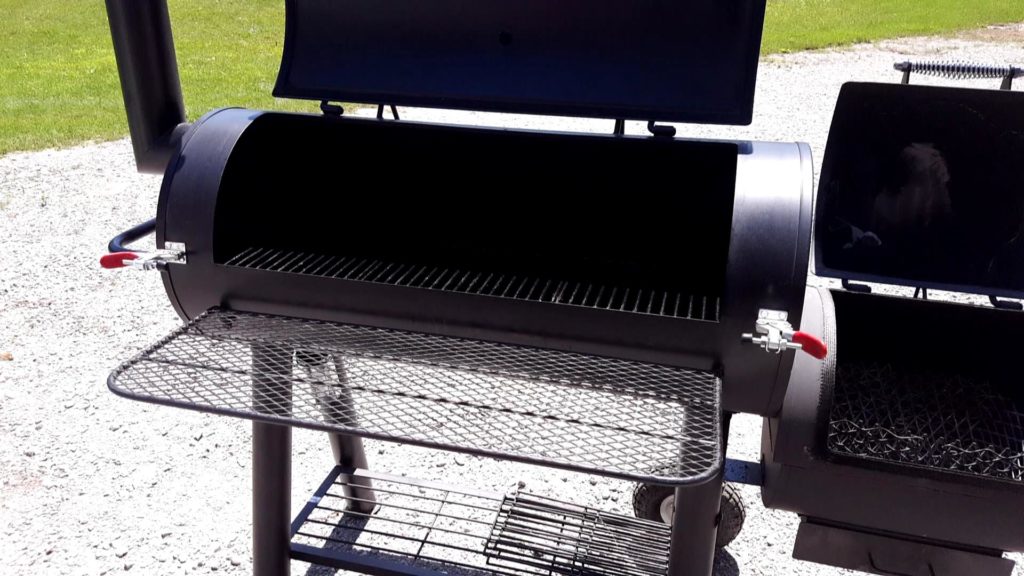
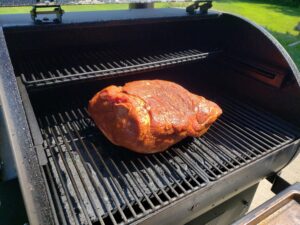
- Cooking Chamber: This is the main compartment where the magic happens. It’s typically a large, enclosed space with racks or grates to hold your food. Whether you’re using an offset smoker or a pellet smoker, the cooking chamber is where your meat absorbs all that delicious, smoky flavor.
- Heat Source: The heat source is what generates the necessary heat for smoking. In an offset smoker, this could be a charcoal fire or wood chunks, while a pellet smoker uses a pellet fire. Each heat source has its own characteristics, affecting the cooking process and the final flavor of your BBQ.
- Fuel System: The fuel system feeds the heat source. In a pellet smoker, an auger automatically feeds wood pellets into the firepot, ensuring a steady supply of fuel. In an offset smoker, you manually add charcoal or wood chunks to the firebox. This difference is a key factor in the pellet smoker vs offset smoker debate.
- Ventilation System: Proper airflow is essential for maintaining consistent temperatures and producing clean smoke. The ventilation system, consisting of vents and chimneys, regulates the airflow within the smoker. Mastering airflow control is crucial, especially in an offset smoker, where it directly impacts the burn rate and temperature.
- Temperature Control: This system allows you to adjust and maintain the temperature inside the smoker. In a pellet smoker, a digital controller takes care of this, making it easy to set and forget. In contrast, an offset smoker requires manual adjustments to the vents and firebox, giving you more control but also demanding more attention.
By understanding these components, you can better appreciate the intricacies of smoking and make an informed choice when selecting your smoker.
Temperature Control and Fuel
How Each Smoker Maintains Heat and Flavor
Temperature control is the backbone of successful smoking. It affects not only the flavor and texture of your food but also its safety. Different types of smokers have unique methods for maintaining heat and flavor, each with its own set of advantages and challenges.
- Pellet Smokers: These smokers are known for their precise temperature control, thanks to their pellet fire system. Wood pellets are fed into the firepot by an auger, which is managed by a digital temperature controller. This setup ensures consistent heat and a steady supply of thin smoke, making it easier to achieve reliable results. When I first used my Camp Chef Smoke Pro, I was amazed at how effortlessly it maintained the set temperature, allowing me to focus on other aspects of the cook.
- Offset Smokers: Offset smokers rely on a charcoal or wood chunk fire to generate heat. The temperature is controlled by adjusting the airflow through the vents and chimneys. This method requires more manual effort and skill, as you need to constantly monitor and tweak the fire. My experience with my Brinkmann Trailmaster taught me the importance of airflow control—too little, and the fire smothers; too much, and the temperature spikes.
- Charcoal Smokers: Similar to offset smokers, charcoal smokers use a charcoal fire as their heat source. The temperature is managed by adjusting the airflow, making it a hands-on process. While it requires more attention, the reward is a rich, smoky flavor that many BBQ enthusiasts crave. My first cook on a charcoal smoker was a learning experience, but the end result—a perfectly smoked brisket—was worth the effort.
Each type of smoker offers a unique approach to temperature control and flavor. Whether you prefer the precision of a pellet smoker or the hands-on challenge of an offset or charcoal smoker, understanding these differences can help you achieve the best results.
Smoke Production and Flavor
Understanding Smoke and Its Impact on Flavor
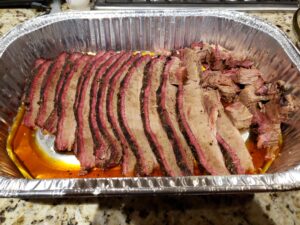
Smoke is the soul of BBQ, adding depth, richness, and complexity to your food. Understanding how smoke is produced and its impact on flavor can elevate your smoking game to new heights.
- Smoke Flavor: The distinctive smoke flavor comes from the combustion of wood or other plant materials. This process releases a complex mixture of chemicals that infuse your food with a unique taste. Different types of wood, such as hickory, oak, apple, and cherry, produce varying smoke flavors, allowing you to customize your BBQ to your liking.
- Smoke Production: Smoke is produced through pyrolysis, a process where wood is heated in the absence of oxygen. This generates the thin smoke that imparts flavor to your food. In a pellet smoker, wood pellets are burned efficiently to produce clean, consistent smoke. In an offset smoker, the type and size of wood chunks or logs you use can significantly impact the quality of the smoke.
- Smoke Flavor Profiles: Different woods and smoking conditions create distinct smoke flavor profiles. For instance, hickory wood is known for its strong, sweet flavor, while mesquite offers a bold, earthy taste. Experimenting with various wood types can help you discover your preferred smoke flavor.
- Smoke Ring: A smoke ring is a visible pink ring that forms on the surface of the meat, indicating proper smoking technique. It’s a sign of well-managed smoke and adds both flavor and visual appeal to your BBQ. Achieving a good smoke ring requires maintaining a consistent temperature and clean smoke throughout the cooking process.
By understanding the nuances of smoke production and flavor, you can enhance your BBQ skills and create mouthwatering dishes that impress every time.
Key Differences: Offset vs Pellet Smoker
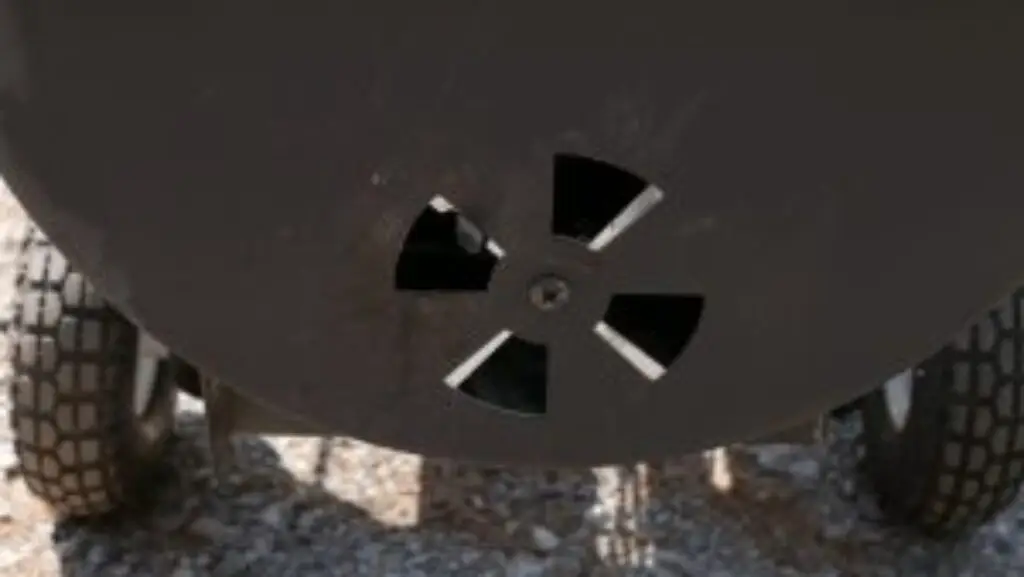
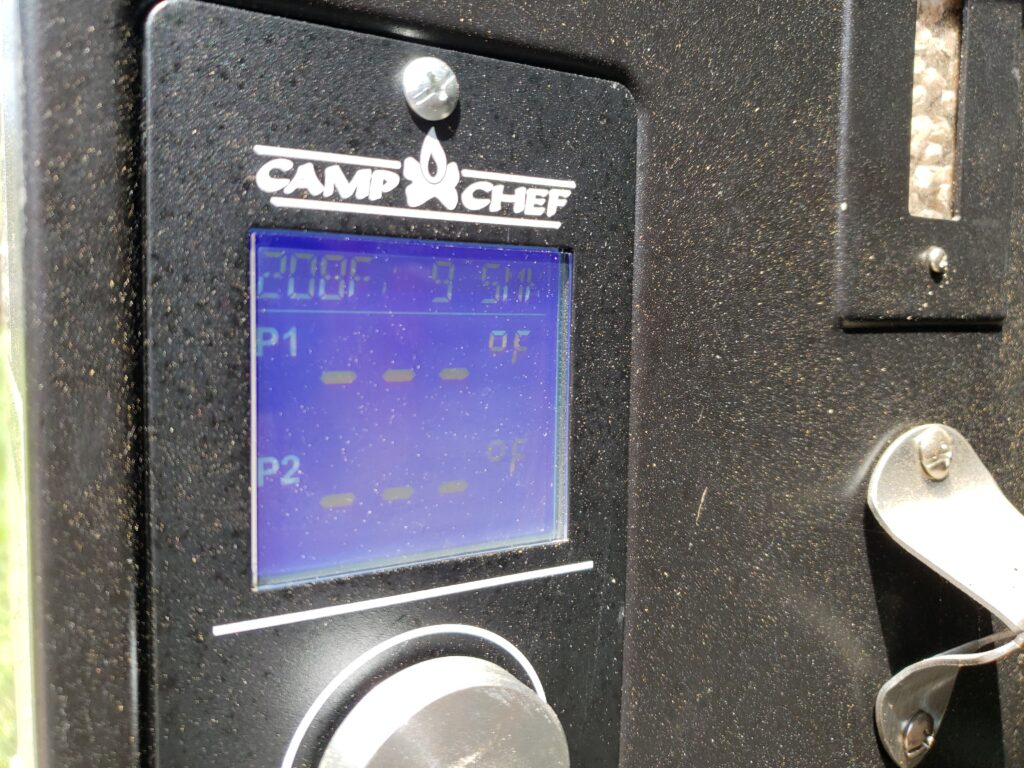
Choosing between an offset smoker and a pellet smoker comes down to how much effort you want to put into the cook. Both are great for smoking meat, but they work in completely different ways. An offset smoker runs on wood logs or charcoal and requires constant fire management, while a pellet smoker burns compressed wood pellets and uses an automated controller to regulate temperature. One gives you traditional, bold smoke flavor, and the other gives you set-it-and-forget-it convenience.
When I first bought my Brinkmann Trailmaster offset smoker, I learned quickly that running an offset smoker is a hands-on process. I found that managing the fire was the real challenge. If you step away for too long, the temperature can crash below 200°F or spike past 300°F. I had one brisket cook where I let the fire die down too much, and I had to scramble to recover, adding more wood while trying not to overshoot the temp. That’s the beauty (and frustration) of an offset—you’re completely in control, but it takes skill and patience.
When I bought my Camp Chef Smoke Pro pellet smoker, I immediately noticed how much easier it was to maintain steady temperatures. No splitting wood, no fire management—just fill the pellet hopper, set the temp, and let the digital controller handle the rest. It was a game-changer when cooking for guests because I didn’t have to babysit the fire the whole time. The tradeoff? The smoke flavor was milder than my offset, even when using hickory or oak pellets. That’s one thing to consider—if you love deep, bold smoke flavor, an offset is king. But if you want consistent results with less effort, a pellet smoker wins hands down.
At the end of the day, both smokers have their place. If you love the art of fire management, go with an offset. If you want reliable, hassle-free BBQ, a pellet smoker is your best bet. Either way, great BBQ is about patience, practice, and good meat—no matter what smoker you use.
Pros and Cons of an Offset Smoker

An offset smoker is a classic BBQ tool that delivers a stronger, smokier flavor compared to other types of smokers, but it comes with a learning curve. If you love the idea of managing a live fire and fine-tuning airflow, this smoker will give you unmatched smoke intensity. But if you’re looking for something low-maintenance, an offset might test your patience.
Pros:



Cons:



If you love hands-on BBQ and don’t mind the challenge, an offset smoker is a rewarding choice.
Pros and Cons of a Pellet Smoker
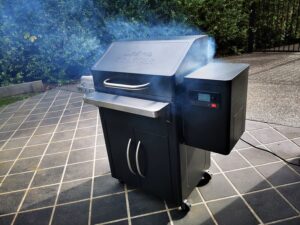
A pellet smoker, with its automatic temperature regulation, is the perfect balance between authentic BBQ flavor and modern convenience. Unlike an offset smoker, which requires constant attention, a pellet smoker runs on compressed wood pellets and an automated temperature control system. This makes it easy to achieve consistent results without constantly adjusting airflow or adding wood. But while set-it-and-forget-it smoking is great, there are tradeoffs.
Pros:



Cons:



If you want great BBQ with minimal effort, a pellet smoker is a fantastic choice.
Which Smoker Is Best for You? (Decision Guide)
Choosing between an offset smoker and a pellet smoker comes down to your BBQ style, experience level, and how much effort you want to put into cooking. Both smokers can produce amazing BBQ, but they cater to different types of pitmasters. The offset smoker vs pellet smoker debate is a common topic among BBQ enthusiasts, with no definitive answer as the best choice depends on individual preferences and needs.
Go With an Offset Smoker If:
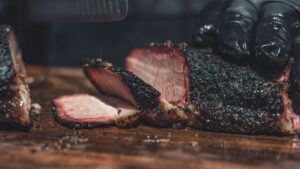



When I first got my Brinkmann Trailmaster offset smoker, I was obsessed with fire management and fine-tuning my cooks. I even modified my smoker—adding tuning plates, sealing joints, and building a charcoal basket—just to improve heat consistency. But make no mistake—offset smokers require constant attention. If you step away for too long, your fire can die or spike in temperature.
Go With a Pellet Smoker If:




When I bought my Camp Chef Smoke Pro pellet smoker, it changed the way I cooked BBQ. I could smoke pork butts and brisket without spending the whole day tending to a fire. The digital controller kept the temperature steady, making it perfect for long cooks. The only tradeoff? The smoke flavor is milder compared to an offset.
Final Verdict – Offset vs Pellet Smoker
When it comes to offset vs pellet smokers, the choice depends on your BBQ priorities. If you crave authentic, bold smoke flavor and enjoy fire management, an offset smoker delivers unbeatable results—but it requires patience and skill. My Brinkmann Trailmaster produced amazing BBQ, but it demanded constant attention. On the other hand, my Camp Chef pellet smoker gave me consistent temperatures and hassle-free smoking, making long cooks effortless.
For traditional BBQ enthusiasts, an offset smoker is king. But if you want precision and convenience, a pellet smoker is the way to go. Either choice leads to delicious BBQ! The offset smoker vs pellet smoker debate highlights that there is no definitive answer, as the best choice depends on individual preferences and needs.
Ready to dive deeper into the world of BBQ? Check out these articles to enhance your smoking skills:
The Best Smoker for a Beginner: 3 Models That Deliver
Discover top smoker recommendations tailored for newcomers to BBQ.
37 Essential Meat Smoking Tips for Beginners
Learn crucial tips to elevate your meat smoking game.
Best Wood for Smoking Beef Brisket: Beginner’s Guide to BBQ
Understand the best wood choices to achieve flavorful brisket.
For some additional discussion on offset vs pellet smoker you can visit this post on reddit here!

